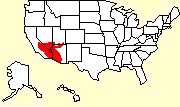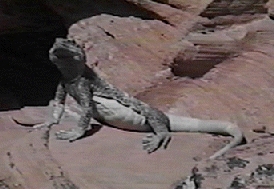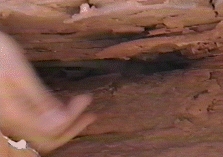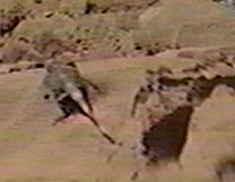|
Western Chuckwalla
|
- Order: Squamata (scaled reptiles)
- Suborder: Lacertilia (=Sauria) (lizards)
- Family: Iguanidae (iguanid lizards)
- Subfamily: Iguaninae (iguana-like lizards)
- Genus: Sauromalus (chuckwallas)
|
| Also Known As:
chuckawalla |
Scientific Name: Sauromalus obesus
obesus Baird, 1858 |
| Habitat: Rocky areas
with numerous hiding spots. |
Sauros="lizard," homalos="flat,"
obesus="fat/swollen"
|
| Length: Over 16 inches
total. |
Also called: Sauromalus
ater |
| Food: Herbivorous. |
 |
|
All pictures are from Mouse's Tank, Valley of Fire State Park,
Nevada, on 07 April 2000 between 9:45 and 10:15 a.m. PDT.
|
|
| Next to the Gila Monster,
Chuckwallas are the largest native lizard in the United States.
They bask in front of their hiding spots in the morning until
they're warm enough to forage for food. Although they appear large
and slow, they can move surprisingly fast, retreating to crevices
in the rock where they wedge themselves by inflating their bodies. |
 |
| It's hard to see in the picture,
but this is all you'll see of the chuckwalla once it wedges itself
into a crevice. The blurred object is my friend's hand as he
recoils from a surprising tail-whip by the chuckwalla. Native
Americans used to eat chuckwallas, and would remove them from
their hideouts by puncturing their lungs with a stick, thus
deflating the lizard and enabling its retrieval. I chose to just
let the chuck come out when he was ready. |
 |
| This next picture is of a
younger chuckwalla which initially wedged itself into a shallow
crevice. Once we took a couple minutes of video, the lizard
immediately ran straight down the side of a vertical cliff to
safety. The picture is of the chuckwalla running down the cliff. |
 |
|
|
|